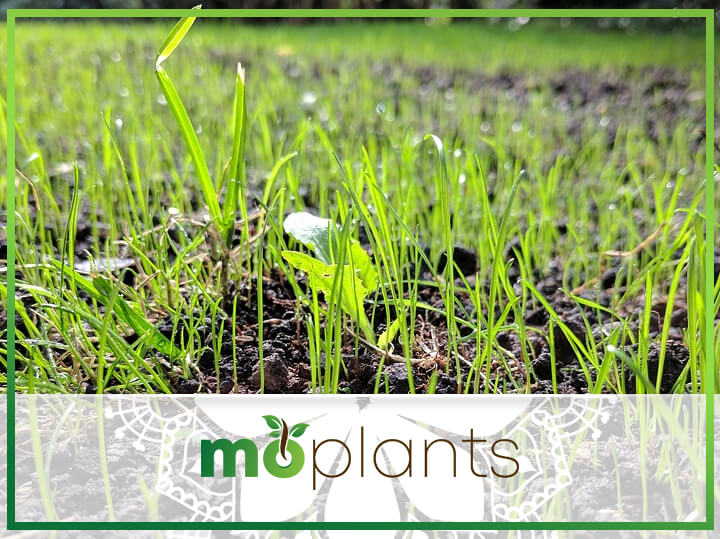After a considerable amount of time, lawns can suddenly look weathered.
This is the effect of various factors taking their toll on the grass: drought, heat, weeds, foot traffic, you name it. Your lawn may be looking thinner and not as lush as you remember!
Now, you’re looking into possibly rejuvenating your lawn.
If you’re considering slice seeding for your grass, this is the article for you. Learn about slice seeding, its pros and cons, and what other ways you can revive a beautiful lawn.
What Is It, Exactly?
Slice seeding, or slit seeding, is a gardening technique for lawns. It helps rejuvenate the area and plant grass quicker and with more efficiency.
Next, let us discuss the primary tool used in this technique.
What’s a Slice Seeder?
A slice seeder, slit seeder, or a seed splicer is a tool used in slice seeding. It makes use of steel blades to cut into the soil.
These slices create furrows. Then, it drops grass seeds into these furrows to grow grass on your lawn.
Slice seeders are machines especially customized to plant seeds with an even planting bed and proper depth.
Many people prefer doing slice seeding using these machines over the traditional method of spreading seeds.
The Pros and Cons of Slice Seeding, Explained
So, now is the time to ask: why is slice seeding a preferred method?
What are the benefits, and are there any risks? To ensure the best for your lawns, read the advantages, disadvantages, and different definitions surrounding slice seeding below.
Definitions: Aeration and Overseeding
We’ve already established slice seeding as a method to grow a more vigorous and healthy lawn. Now, let us first define some words we’ll use to compare and deepen the process of slice seeding. Ready?
Overseeding
Overseeding is one of the methods landscapers, homeowners, and gardeners may use for lawn care and renovation. With overseeding, you spread grass seeds over the existing lawn. This creates a thicker, more lush lawn.
Overseeding is done with the help of a machine like a lawn spreader or an overseeder.
This type of machine spreads seed all around the lawn. After using the overseeder, watering the grass, and proper lawn maintenance, grass growth will be fast. Your lawn will be back at its best state.
Aeration
Aeration is the process that precedes overseeding. Aeration is done by perforating the soil to create small holes. These holes let more air, water, and nutrients into the roots.
Grass roots also react to aeration by growing deeper into the ground.
Growing deeper grass roots means the grass also becomes tougher. This way, aeration will enable your lawn to withstand climate changes, sudden extreme weather that comes with every season, and possible storms and drought.
Aeration can be as simple as punching holes into the soil with a pitchfork. You can also use aeration tools such as spike aerators and plug aerators.
Aeration does away with compacted and dry soil, along with stormwater runoff. Stormwater runoff can be dangerous for many landscapes.
The Pros of Slice Seeding
Here are the different advantages to this technique.
Faster Germination Rate
When a seed grows into an organism, that process is called germination. The rate will depend on how fast the plant will achieve this.
This rate is improved with slice seeding because the seeds have direct contact with the soil.
This seed-to-soil contact is key for good growth rates with grass seed because of the rapid transfer of water and nutrients from the soil to the seed. Simply scattering or spreading seeds won’t ensure the seeds’ direct contact with the soil.
Overseeding, for example, doesn’t ensure the germination of the grass. Some may grow slowly or not at all.
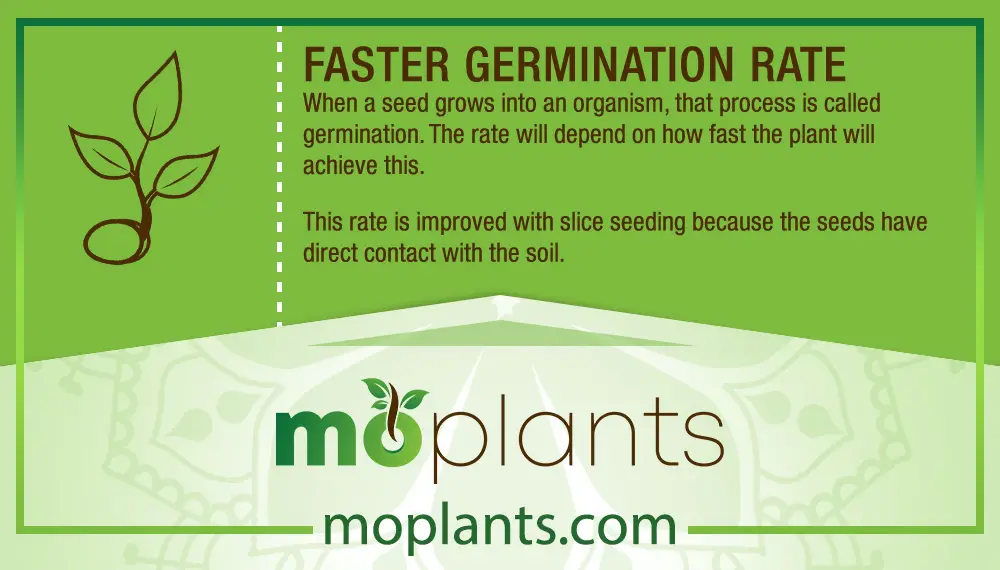
Perfect Seeding Spot
The blades of slice seeders create the perfect seed spots in your lawn. We’ve mentioned above that the slice seeder machine slices into the soil to create areas called furrows.
These furrows are deep, and even then, the depth can be customized according to seed type.
A slice seeder will also allow for the even distribution of grass seed on your lawn. This is also absent from the technique of scattering seeds by hand or spreading them using an overseeder.
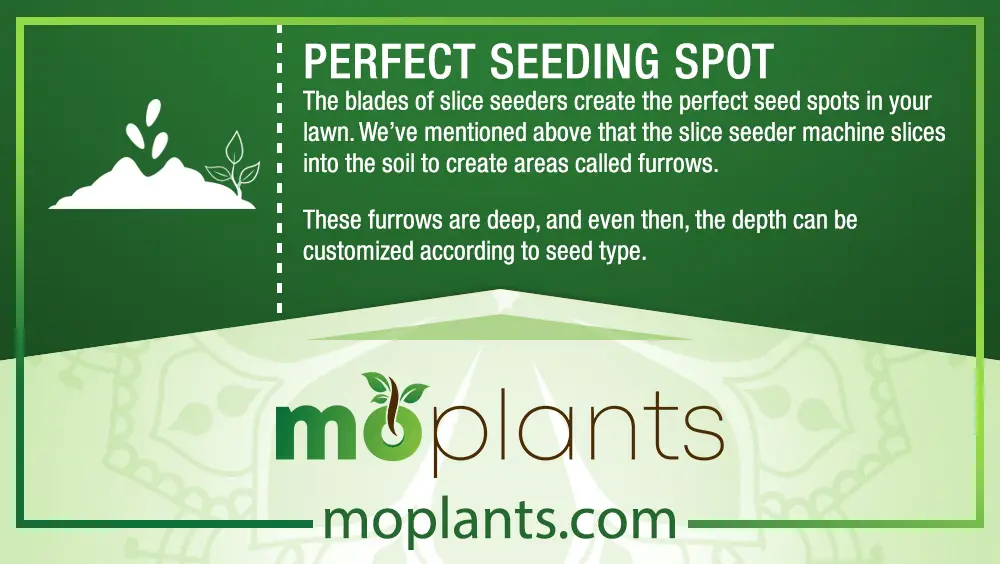
Cost-Effective
This method is less expensive and easier to maintain. You’ll have lush, thick grass on your lawn for a lower price, and when you have to do it again, it’ll be easier to do!
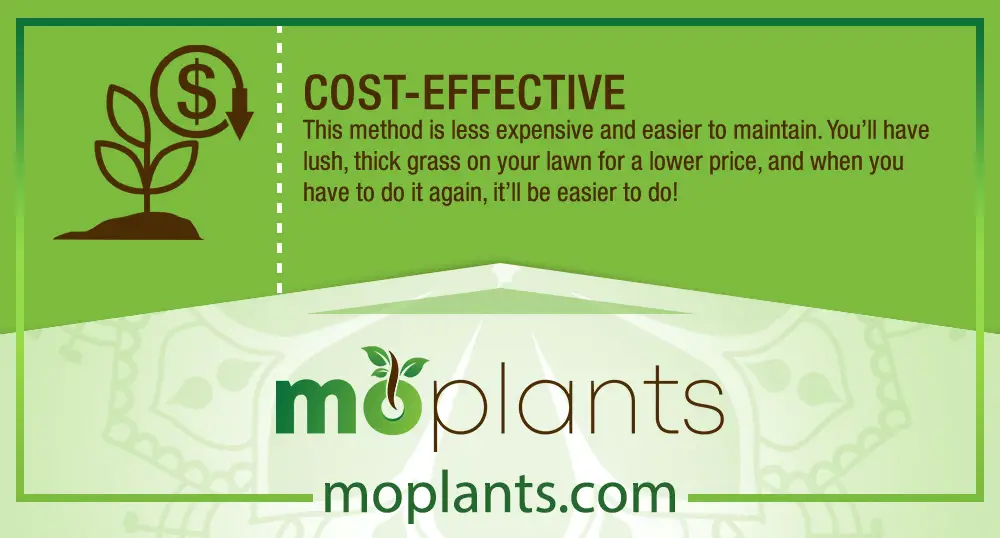
No Displacement
Grass seed can easily be displaced by all the birds, wild animals, and winds in your area. This won’t happen with a slice seeder! The perfect depth for your seeds is determined, and they immediately touch the soil.
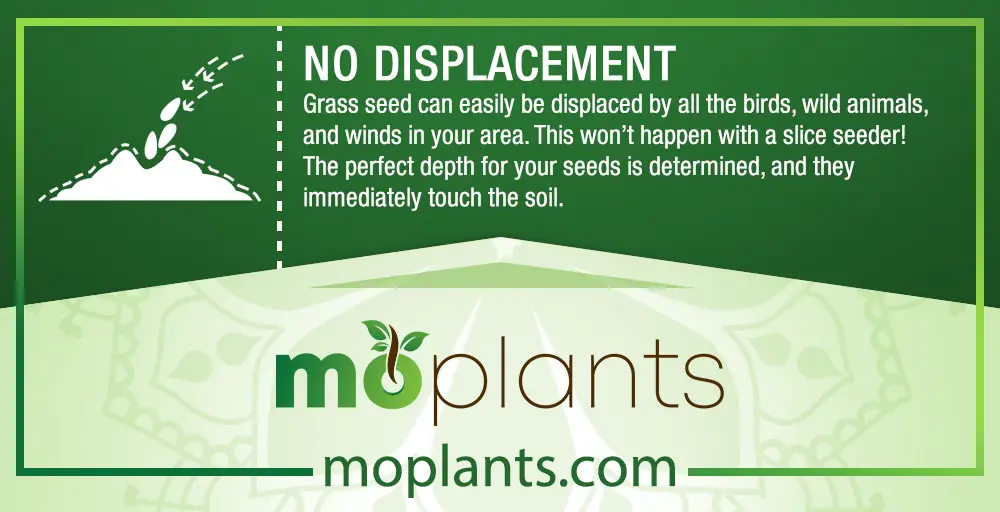
Infographic
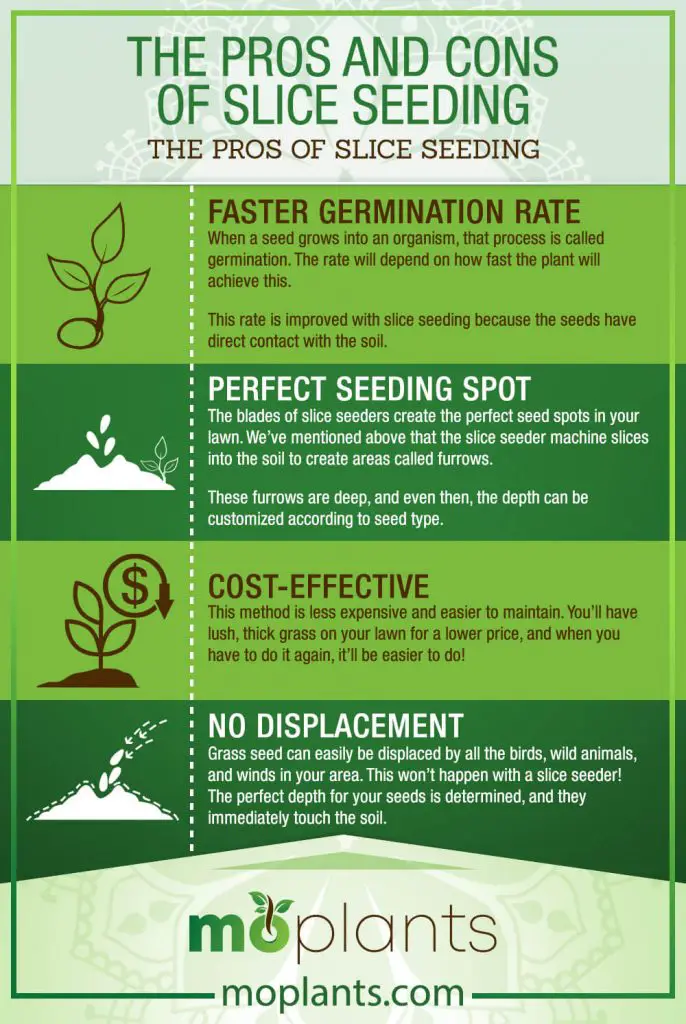
The Cons of Slice Seeding
While slice seeding sounds great for your lawn, it can come with disadvantages. Be fully informed of the following cons!
Spreads Weeds Internally
While this method of seeding can fight weeds once the grass is established, it can also cause internal weed spread.
However, this disadvantage can easily be remedied with proper weed control. Weed your lawn first, then plant the grass seed later.
Be up-to-date with your lawn maintenance to avoid this problem.
Can Cause Aesthetic Problems
If your lawn doesn’t have that much trouble, then slice seeding may cause more harm than good. This is especially true for how your lawn may look. If there are only a few dry patches here and there, maybe an easier way is available.
Requires Fertilizer Precision
Perfection can lead to flaws. While this type of lawn care is precise and beneficial for your grass, pouring fertilizer must be precise as well. Uncovered soil holes can lead to a grass seed’s death!
Needs Proper Storage
The blades can rust easily. To best prepare for future lawn care, store your machine in a cool, dry place. For example, a garden shed will do.
However, if you and your family live in a smaller area, it might be hard to look for storage.
Do You Still Need to Aerate Your Lawn?
Not necessarily! Aeration and overseeding don’t always have to come after the other.
But it’s still a good idea to do so. Aeration will provide your lawn with better growing conditions. If you think your grass is weak and prone to disease and weeds, aeration can fix it from the source problem: the soil.
Aerate every one to two years instead of a full-on lawn renovation to cut down on costs. To boost growth, you can do aeration and overseeding if you decide that your lawn needs overseeding more.
Things to Consider with Slit Seeding
Remove All Invasive Plants
Let your grass seed grow without any deterrents. Dig up weeds and invasive plants that will hold back grass growth. Spray large areas with herbicide as part of lawn maintenance.
Prevent Competition
Get the lawnmower out and cut through your lawn.
While this may take extra time, it will cut through any invasive plants and give you a bit of a fresh start! When the growing season comes in, there are more chances of grown grass seed instead of weeds.
Water Well
Water freshly planted grass seed in patches, lightly, and daily for the first three weeks. Don’t oversaturate the soil or the area with water, however. After the first few weeks, water every two to three days.
Conclusion
Slice seeding is a good option to boost growth and health for your lawn. After sustaining foot traffic, heavy use, extreme heat, and a bit of every kind of weather, your lawn may need a complete revamp.
However, a smaller turf may not need it at all. You also have different options for lawn care and maintenance, and this is only one of them. The problem may lie in your soil, where aeration would be enough.
We hope this article helps you make your best decision! Contact us or comment below with your experiences and opinions.

